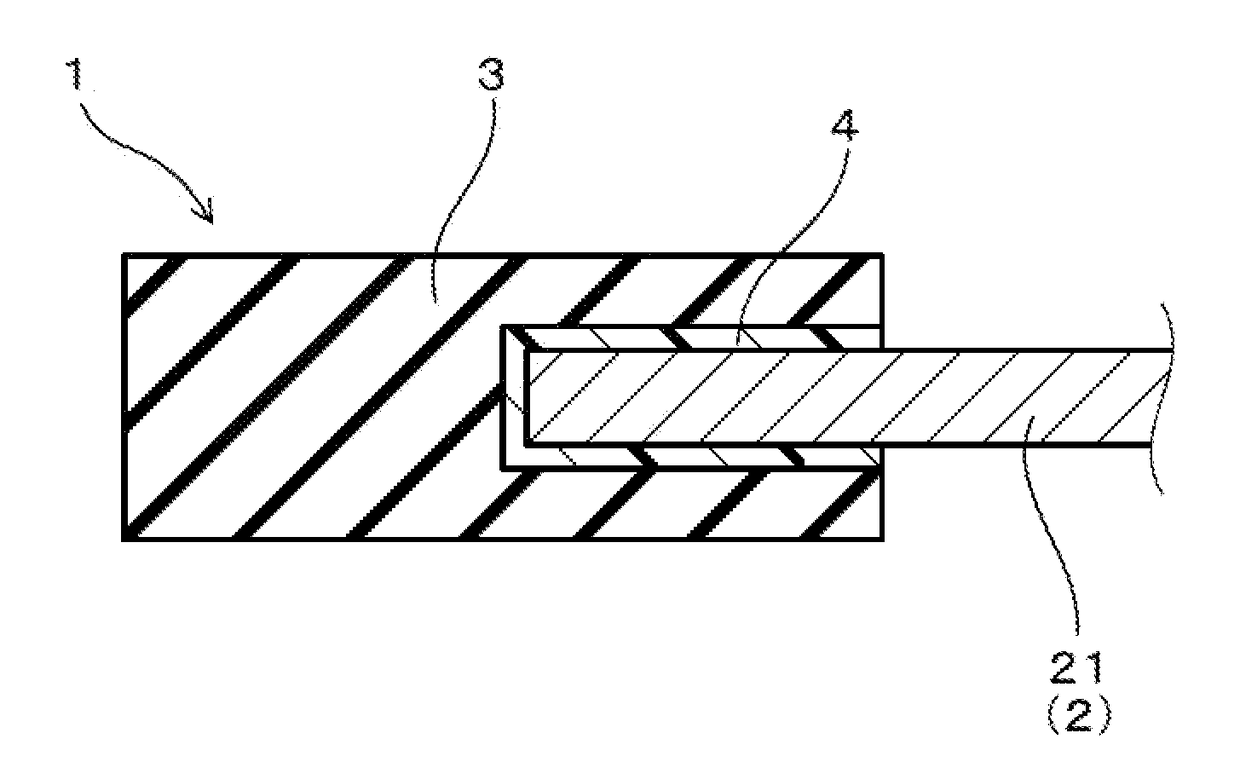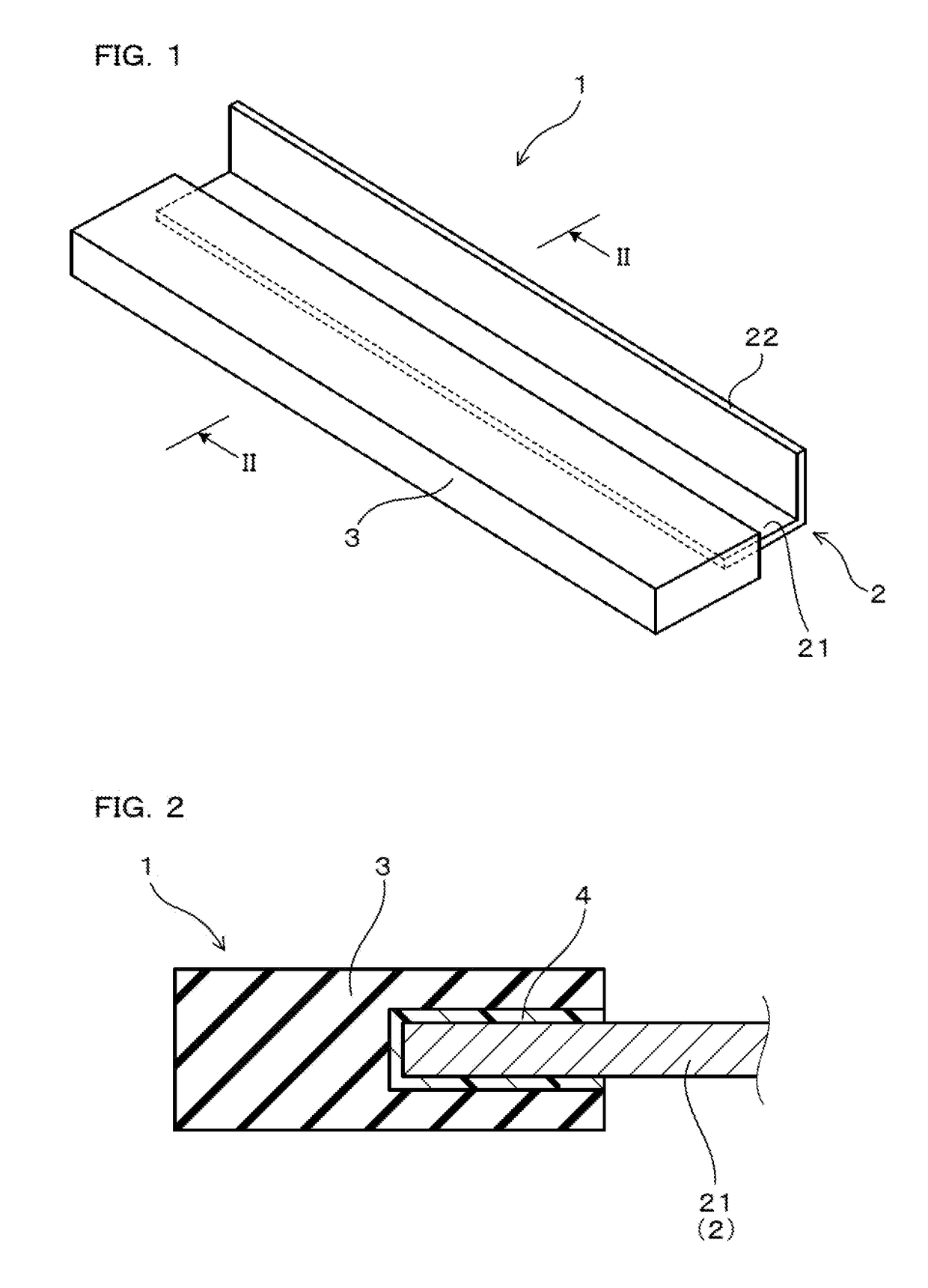Cleaning blade
a technology of cleaning blades and blades, applied in the field of cleaning blades, can solve the problems of difficult stabilization of volume electric resistance, difficult scraping of residual toner into a toner recovery box utilizing rubber elasticity, and inability to store toner in the toner recovery box, etc., to achieve the effect of inhibiting the increase of contact electrical resistance, not impairing the reactivity of urethane catalysts, and high adhesion
- Summary
- Abstract
- Description
- Claims
- Application Information
AI Technical Summary
Benefits of technology
Problems solved by technology
Method used
Image
Examples
embodiment 1
[0040]A cleaning blade according to Embodiment 1 will be described with reference to FIGS. 1 and 2. As illustrated in FIGS. 1 and 2, a cleaning blade 1 of the present embodiment is a cleaning blade for use to remove a residual toner (including not only a toner but also a toner external additive) remaining on the surface of a counterpart member in an electrophotographic image forming device by sliding contact with the counterpart member 1. In the present embodiment, the counterpart member is specifically a photoreceptor drum in an electrophotographic image tensing device.
[0041]The cleaning blade 1 has a conductive support 2 including a plate-shaped portion 21, a blade part 3 that is formed on the plate-shaped portion 21, and is made of polyurethane rubber, and a conductive adhesion layer 4 that is provided between the plate-shaped portion 21 and the blade part 3, and contains a conductive agent (not shown in figures). The blade part 3 contains a potassium salt (not shown in figures) ...
embodiment 2
[0043]A cleaning blade according to Embodiment 2 will be described with reference to FIGS. 3 and 4. As illustrated in FIGS. 3 and 4, in the cleaning blade 1 of the present embodiment, the blade part 3 is bonded on one plate surface of the plate-shaped portion 21. The conductive adhesion layer 4 is provided between the one plate surface of the plate-shaped portion 21 and a part of the blade part 3 which opposes to the one plate surface. Other configurations are the same as those disclosed in Embodiment 1.
[0044]Hereinafter, the present disclosure will be described more specifically with reference to an experimental example.
—Preparation of Urethane Rubber Compositions—
[0045]Forty four parts by mass of polybutylene adipate (PBA) (“Nippolan 4010” manufactured by Tosoh Corporation) subjected to defoaming in vacuum at 80° C. for 1 hour, and 56 parts by mass of 4,4-diphenylmethane diisocyanate (MDI) (“Millionate MT” manufactured by Tosoh Corporation) were mixed, and reacted under a nitrogen...
PUM
 Login to View More
Login to View More Abstract
Description
Claims
Application Information
 Login to View More
Login to View More - R&D
- Intellectual Property
- Life Sciences
- Materials
- Tech Scout
- Unparalleled Data Quality
- Higher Quality Content
- 60% Fewer Hallucinations
Browse by: Latest US Patents, China's latest patents, Technical Efficacy Thesaurus, Application Domain, Technology Topic, Popular Technical Reports.
© 2025 PatSnap. All rights reserved.Legal|Privacy policy|Modern Slavery Act Transparency Statement|Sitemap|About US| Contact US: help@patsnap.com



